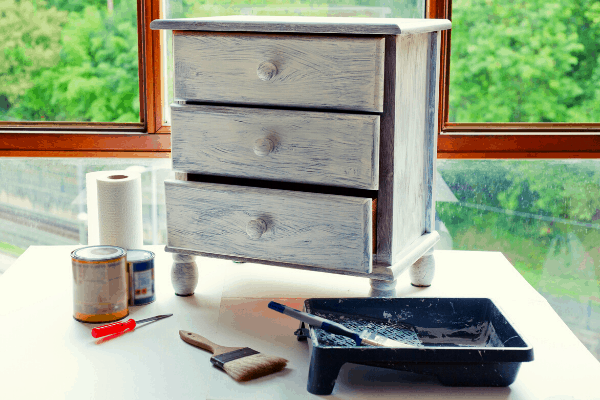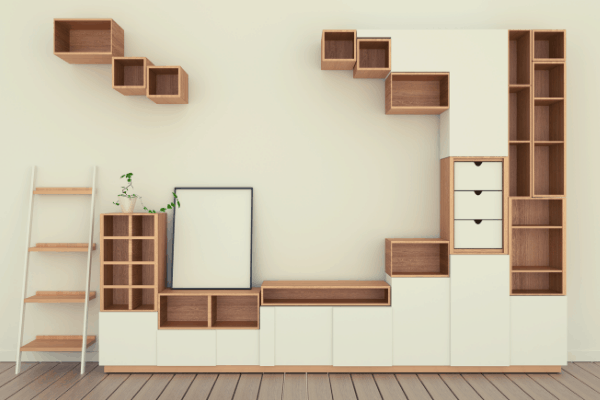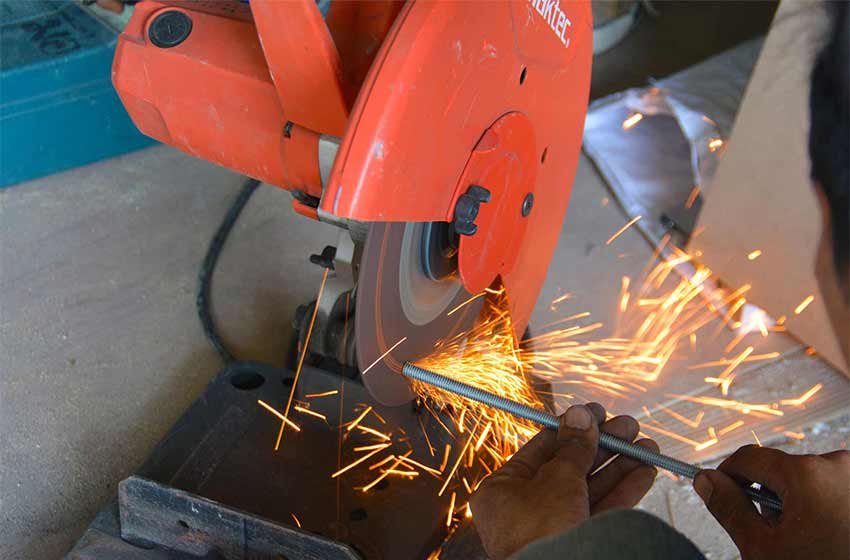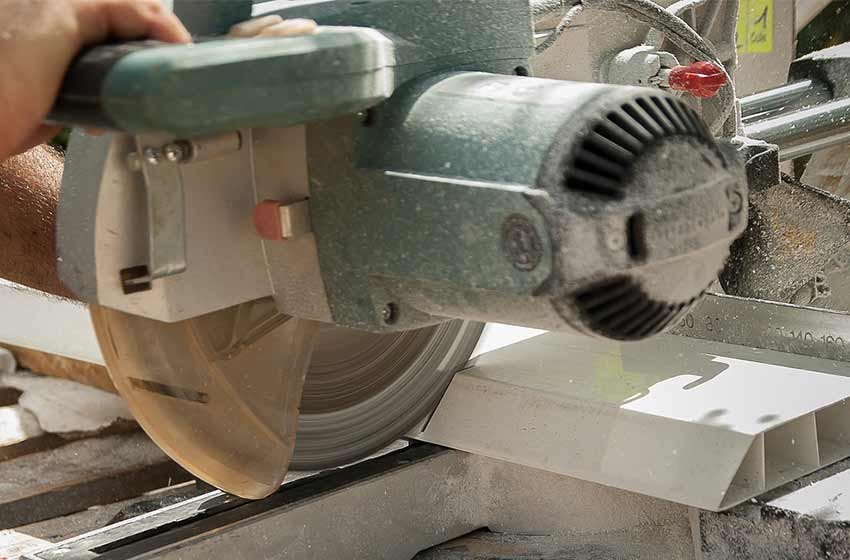Whether you’re taking on a DIY furniture project or embarking on a different kind of woodworking journey, squared lumber will be quite a common requirement. But can it be done using only a table saw?
There could be a million reasons why you don’t have a workshop full of every kind of saw and tool under the sun.
Maybe you’re a novice just starting out with DIY, or maybe carpentry is a long-neglected hobby you’ve recently come back to in light of national coronavirus lockdowns. Maybe you’re an experienced woodworker already but you do a lot of your work on site rather than at home.

Whatever the reason, having a limited arsenal of saws is no reason to shy away from seemingly difficult tasks. A table saw might not seem like the optimal tool for squaring lumber but at the end of the day, if it can be done then why not?
It is indeed possible, and this post will show you how to go about it!
Why Do You Need Squared Lumber in the First Place?
Unless you’re making a very ~ rustic ~ coffee table where you’ll be using very raw (and therefore rough) wood, odds are you’ll need to square up your lumber before starting your project in order to get a neat and polished finish, as well as furniture that is secure and reliable.
Using rough wood for carpentry projects can come with a range of challenges and disadvantages including:
- Raw wood is difficult to treat and seal so might be more prone to insect infestations and mould, as well as warping and swelling if it gets wet.
- Raw wood is more difficult to clean so is not really suitable for most indoor furnishings.
- A lot of raw wood comes with bark still on it, which is a rough and inconsistent surface, and although it might be attractive, it’s likely to fall off or chip away over time.
- Rough lumber is VERY difficult to build furniture and other items with as its sides and planes are not straight, leading to wonky or unstable finished products.

Generally speaking, squared lumber is a better all-rounder and will make your life much easier. It is possible to buy lumber already squared, but if that’s out of budget or availability is low then you can square rough lumber yourself using your table saw without too much hassle.
Using Your Table Saw to Square Lumber
Now that we’ve accepted that squared lumber is oftentimes the superior choice for woodworking projects, we can start going through the process for using a table saw to help us achieve a squared finish.
Before you begin, make sure you’re observing the necessary health and safety guidelines associated with using a table saw. These include wearing protective gear such as gloves and safety goggles, as well as working in a well-ventilated area. Abiding by these few simple suggestions will greatly minimise the risk of accidents happening. Once you’ve done that, here’s what you need to do:
(image of gloves and protective eyewear)

Steps for Squaring Lumber with a Table Saw
- Ensure at least one long edge of your board is straight and that the board is flat. Working with a warped or uneven board on a table saw will present a whole range of other challenges that, frankly, probably aren’t worth dealing with.
- If you find that the board you’re using doesn’t already have a straight edge to work with then you’ll have to cut one yourself to give yourself something to work with.
- Once you have one straight edge, you can set to work squaring the rest of the board by first making a 90° cut on one of the shorter sides.
- You can do this by lining the wood up with the miter gauge built into your table saw but you’ll need to ensure the miter gauge is calibrated to exactly 90° first.

- You could also use a cross-cutting sled to get your 90° angle without the effort of calibrating any tools first, however if you don’t have one of these sleds, the miter gauge method is just fine.
- Once you’ve got your 90° end, you can square up the rest of the board by rotating it and repeating the process for the opposite end, getting that one to 90° too.
- Once both ends are squared, you can then measure the length of the board and use the ripping technique to make sure both long sides are straight too.
This should leave you with a perfectly squared bit of lumber, ready to be put to work in a carpentry project of your choosing.
Some Examples of Things You Can Build with Squared Lumber
The list of things you can go on to build once you’ve squared your wood is basically endless but here are some common items that you’ll be able to make relatively easily.
- Shelving units and cabinets
- Benches of all different kinds: park benches, workbenches, garden benches – the world is your oyster!
- Simple chairs and barstools
- Any number of different coffee table designs
- Storage boxes and chests

What you’re able to make will obviously depend on the type, thickness, quantity and length of squared wood you have, but once you know the basics of using a table saw to square lumber, you’ll be able to square different dimensions of wood.
Alternatives for Squaring Lumber
Although using a table saw to square lumber works perfectly well, this isn’t necessarily the preferred tool for the job. Most of the time, squaring lumber is done using the following:
Jointer
- A jointer is a carpentry power-tool used for planing wood, making flat surfaces along its lengths.
- Also commonly used for squaring boards.
- More specifically built for this kind of work than a table saw and therefore more commonly used.
Planer
- Also known as a thickness planer, these machines trim wood to a consistent thickness throughout.
- Planers can also make boards flat by removing uneven or rough surfaces.
Bandsaw
- A bandsaw can sometimes be used for squaring lumber edges, but the quality of the finish will depend largely on the type of wood used, and the thickness and stability of the bandsaw blade.
- Where possible, you want to use a blade that is both thin and stable in order to get the smoothest, most precise cut.
- Not generally considered a good option for squaring but where there’s a will, there’s a way!
Hand Plane and Hand Saw
- This combination of hand tools is the most old-school way of squaring lumber and is a lot more effort than using power tools (obviously).
- It takes a lot of practice to use them correctly and hone your technique to ensure appropriately squared wood.
- Very satisfying when you get it right!
- More affordable than high-end power tools.
On a Balance
Even without a full range of carpentry power tools, you’ll still be able to make beautiful and functional furniture using your table saw. Table saws are perfectly capable of squaring and planning lumber, and with a little practice, the process will feel like second nature to you!
It’s important to understand all the different functions your table saw can offer as this will save you running out to buy more tools every time a different project crops up. If you want to save the headache and some money, get to fully know your table saw and make it work for you!
You’ve also seen the importance of squaring wood in the first place so the next time you see a chunk of wood whilst on a walk and think to yourself “could I make a killer coffee table out of that?” consider the practicalities of working with rough wood and instead ask yourself “can I square that with my table saw?”
If the answer is no, maybe leave the wood alone.












